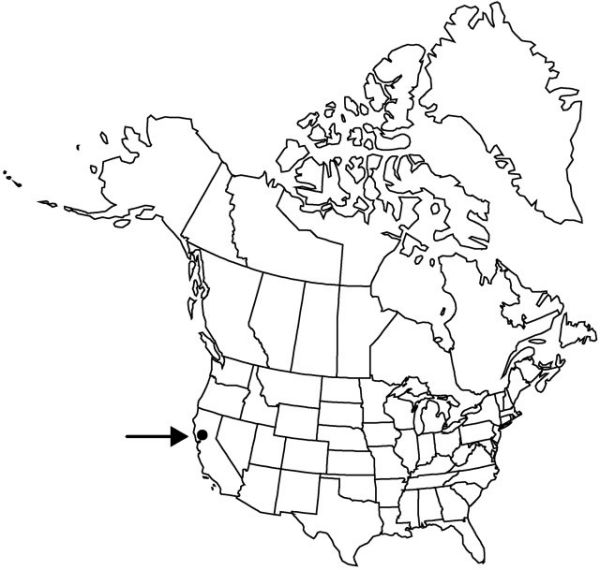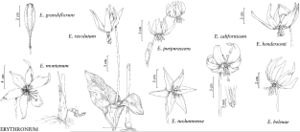Erythronium helenae
Contr. Dudley Herb. 1: 188. 1933.
Common names: Mount St. Helena fawn-lily
IllustratedEndemic
Bulbs ovoid, 30–55 mm, sometimes producing sessile bulbels. Leaves 7–20 cm; blade mottled with irregular streaks of brown or white, broadly lanceolate to ovate, margins ± wavy. Scape 12–30 cm. Inflorescences 1–3-flowered. Flowers fragrant; tepals ± white, bright yellow at base, pinkish in age, lanceolate to ovate, 25–40 mm, inner with small auricles at base; stamens 8–13 mm; filaments ± yellow, linear, ± slender, less than 0.8 mm wide; anthers yellow; style ± white, often bent to one side, 5–8 mm; stigma unlobed or with lobes shorter than 1 mm. Capsules obovoid, 2–4 cm. 2n = 24.
Phenology: Flowering spring (Mar–Apr).
Habitat: Dry woods or scrub, on serpentines
Elevation: 500–1200 m
Distribution

Calif. (vicinity of Mount St. Helena).
Discussion
Selected References
None.
Lower Taxa
None.
